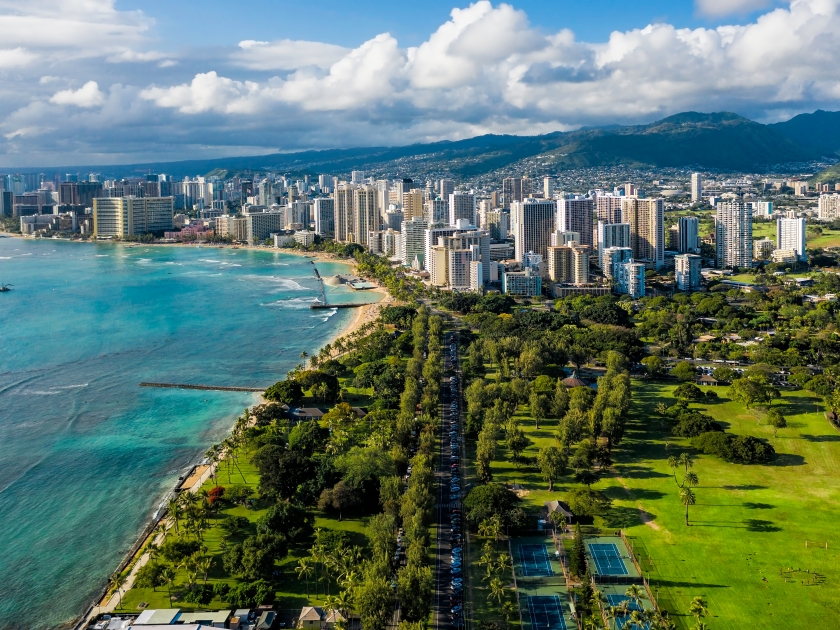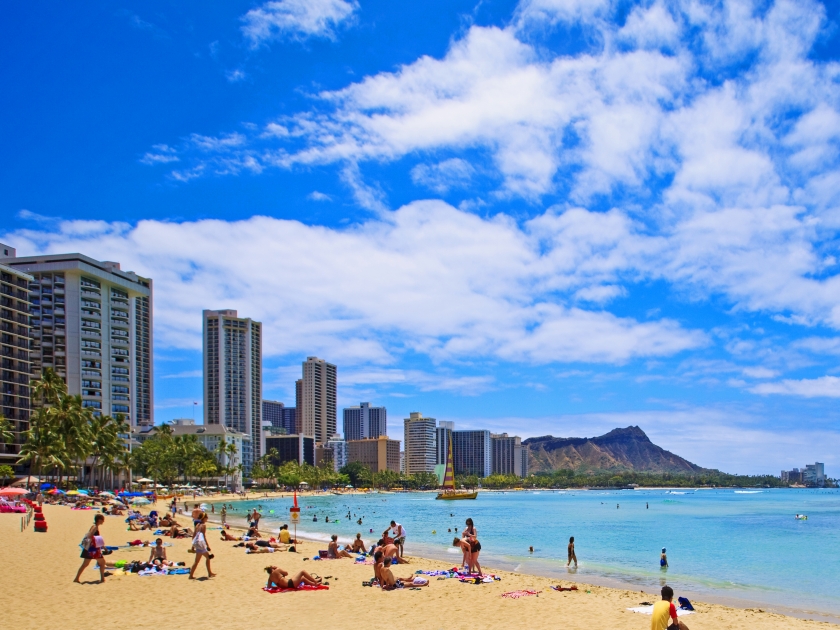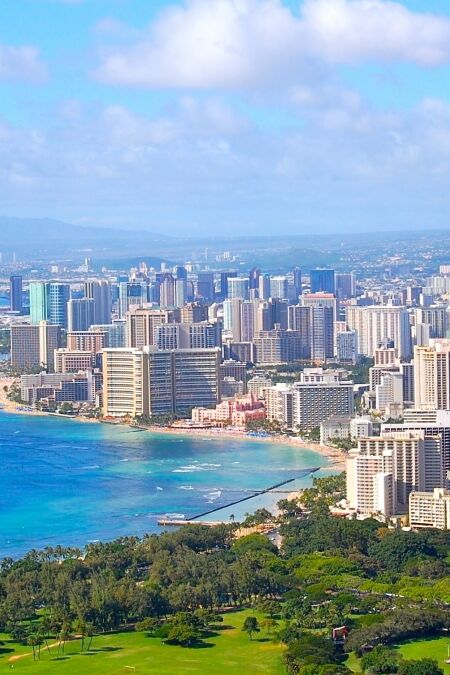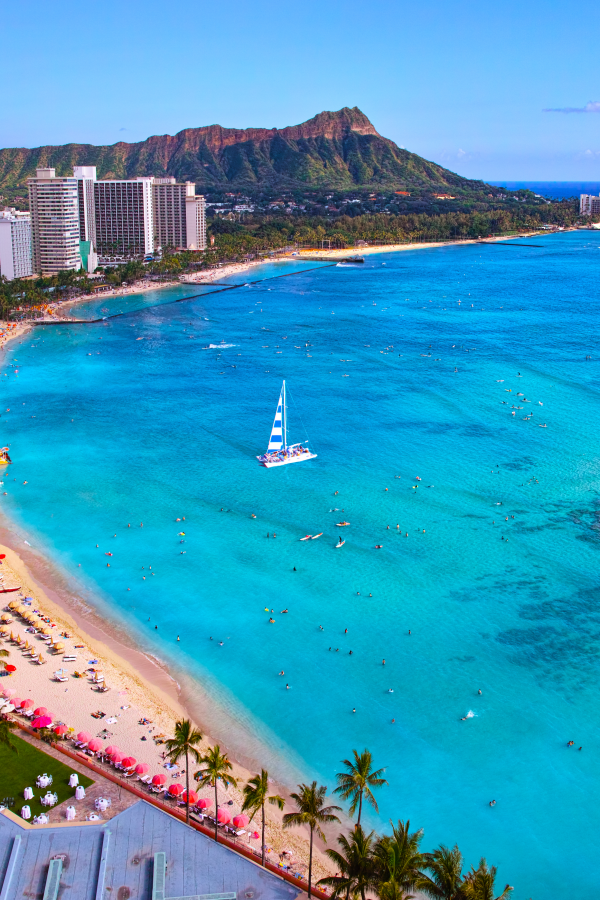Waikiki, renowned globally as a quintessential paradise, attracts millions of visitors each year with its world-famous beaches, vibrant nightlife, and rich cultural heritage. Located on the island of Oahu, this iconic Hawaiian destination offers an array of unique attractions. In this article, we’ll explore Waikiki’s geographical location, delve into its attractions, and uncover why it’s such an integral part of Oahu’s allure, answering the pivotal question: “What island is Waikiki on?”
Geographical Location of Waikiki

Waikiki is situated on the south shore of Oahu, one of the eight major islands of the Hawaiian archipelago and often referred to as “The Gathering Place.” This vibrant neighborhood lies just to the southeast of the island’s capital, Honolulu, making it a central hub for both locals and tourists. Oahu seamlessly blends natural beauty with urban convenience, and Waikiki epitomizes this mix with its stunning coastline that stretches along world-renowned beaches. The area is framed by the natural grandeur of volcanic craters and lush rainforests, presenting breathtaking views and easy access to a variety of island adventures.
Exploring Oahu: The Heart of Hawaii
Oahu stands as the third largest of the Hawaiian Islands, yet it holds the distinction of being the most populous and culturally vibrant. Known as “The Heart of Hawaii,” Oahu is a stunning fusion of jagged mountain ranges, verdant valleys, and expansive shores, including the legendary North Shore known for its massive winter waves. The island’s geography fosters a dynamic landscape that ranges from the bustling city life of Honolulu to the tranquil, rural settings of the Windward Coast. Historically, Oahu has been a pivotal center of Hawaiian royalty and culture, home to significant landmarks like the Iolani Palace and the sacred Waimea Valley.
Waikiki’s Attractions and Landmarks

Waikiki Beach, a two-mile-long sandy paradise, offers ideal conditions for surfing, sunbathing, and romantic sunset strolls. Towering over the district is Diamond Head, an extinct volcanic crater and a popular hiking spot that offers panoramic views of the Pacific Ocean and Honolulu. Just a short walk from the beach, the Honolulu Zoo showcases a variety of exotic wildlife, providing a fun-filled day for families. The area is also a shopper’s haven with luxury boutiques and local shops along Kalakaua and Kuhio Avenues, complemented by a diverse dining scene that features everything from gourmet restaurants to casual beachside eateries. Together, these attractions make Waikiki a vibrant hub of entertainment and relaxation.
How to Get to Waikiki
I am raw html block.
Click edit button to change this html
Reaching Waikiki is straightforward, with multiple transportation options available for travelers. The closest airport is Daniel K. Inouye International Airport, located just a 20-minute drive away, offering various services including shuttles, taxis, and ride-sharing options that provide direct access to Waikiki. For those preferring independence, car rentals are available at the airport, allowing visitors to explore at their own pace. Within Waikiki, public transportation is both efficient and economical; the bus system connects Waikiki with other parts of Honolulu and the island, making it easy to navigate the area without a car. For exploring the local vicinity, walking is often the best choice given the high density of attractions and amenities, and renting a bicycle or a scooter can add a fun twist to your mobility options.
Accommodations and Best Times to Visit Waikiki
Waikiki caters to a wide range of preferences and budgets when it comes to accommodations, featuring everything from luxurious resorts like the Royal Hawaiian, known for its distinctive pink facade and prime beachfront location, to budget-friendly hotels such as the Waikiki Gateway Hotel, which offers comfort without the hefty price tag. For those seeking a more intimate experience, numerous vacation rentals and boutique hotels are scattered throughout the district. The best time to visit Waikiki is typically during the spring (April to June) and fall (September to November) months, when the weather is pleasant, and the tourist crowds are thinner. These periods provide the ideal balance of comfortable temperatures and reduced rates, making it a perfect time to enjoy all that Waikiki has to offer without the peak season rush.
Tips for Tourists Visiting Waikiki

Safety Tips
- Always swim in designated areas supervised by lifeguards.
- Use sunscreen generously to protect against the strong Hawaiian sun.
- Be cautious when walking near busy streets or at night.
Cultural Etiquette
- Show respect at sacred sites and local neighborhoods; observe signs and guidelines.
- Learn simple Hawaiian phrases such as “Aloha” (hello/goodbye) and “Mahalo” (thank you) to engage respectfully with locals.
- Remove your shoes when entering someone’s home, a common practice in Hawaii.
Must-Try Local Foods
- Sample traditional Hawaiian dishes like poke, loco moco, and shaved ice.
- Enjoy a plate lunch at a local eatery for a true taste of local cuisine.
- Try freshly caught seafood, especially at beachside restaurants.
Day Trips from Waikiki
- Explore the North Shore to watch professional surfing, especially during winter months.
- Visit the historic town of Haleiwa for unique shopping and dining experiences.
- Take a trip to the Polynesian Cultural Center to learn about the diverse cultures of the Pacific.
- Hike the trails of Manoa Valley for stunning views and encounters with lush, tropical landscapes.
Waikiki is Where Vibrant Culture Meets Paradise
We invite you to dive into the warm waters, stroll along the soft sands, and let the aloha spirit enchant you. Waikiki promises an unforgettable experience that will linger long after your footprints in the sand have washed away. Embrace the tropical breeze and discover the unique treasures of Waikiki on your next getaway.




